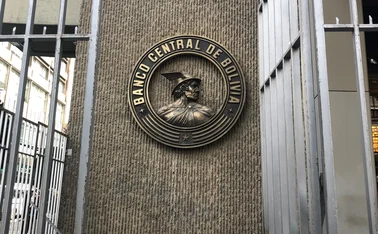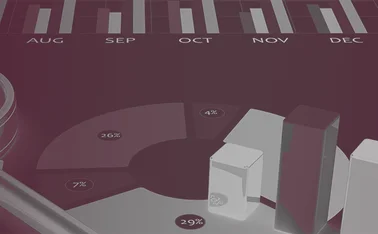
China's dual-economy poses major challenge for future development
Imbalances are structural, financial, institutional and systemic

The growth experiences of a large number of countries - particularly China - during the past few decades highlight that both the pace and pattern of growth are critical for achieving desirable development outcomes. While fast economic growth is essential to lifting people out of poverty, some growth patterns are more effective than others in reducing poverty, improving wellbeing, promoting equity and stimulating innovation.1
The quality growth framework developed by Thomas et al emphasises three key points for starting and maintaining growth momentum: poverty reduction, equality and environmental sustainability.2
Broadly speaking, countries are endowed with at least three types of assets that matter for growth and welfare: human and social capital; natural and environmental capital; and physical and financial capital. Technological progress, the institutional environment and good governance that affect the use of these assets also influence growth and welfare. In traditional neoclassical growth theory, much attention has been given to the accumulation of physical and financial capital. In the endogenous growth models, more attention has been given to ideas, knowledge and institutions, while physical capital has been put on the back burner. For poverty reduction, human (and social) capital as well as natural (and environmental) capital, such as land and water, are particularly important, as these are the primary assets possessed by the poor.
The role of the government is crucial in enabling the accumulation of human capital and the conservation of natural capital. In many countries, including China, there are market failures that lead to an underinvestment of human capital and overexploitation of natural capital. For example, the social returns from primary education and preventative health care are much higher than the private returns, and the levels of investment in these public services would be suboptimal if the government failed to provide them. There are also market failures in the form of undersupplying certain types of physical capital and public infrastructure, such as clean water, rural roads, irrigation systems or agricultural technology and innovation with some characteristics of public or semi-public goods, while overproducing pollution and greenhouse gas emissions that have negative externalities.
China's past success in achieving high GDP growth is based on a growth model where regions, companies and households have been gradually but steadily allowed by the central authorities to compete on attracting and using the human, natural, physical and financial capital for generating employment, profits and GDP, with central guidance on planning, market regulation, appointment and discipline of officials, and other national strategic objectives.
China's unique central-local governance system has facilitated many institutional innovations that have motivated local governments, state-owned enterprises (SOEs), private companies and households to pursue growth through a ‘trial-and-error' strategy. As a result, the 35 years of high growth have created a dual economy, with both successful and failing parts. The structural imbalance of the dual economy in China can be summarised as structural, financial, institutional and systemic.
Structural challenge
The structural divergence of the Chinese economy is particularly forceful now. The profits from SOEs are dropping much faster than from privately owned enterprises (POEs), even though the former continue to enjoy better access to credit. But more importantly, while the first- and second-tier cities are seeing signs of recovery - both in prices and transaction volumes of real estate - the third- and fourth-tier cities are experiencing a further fall in housing prices. Even though the absolute levels of housing prices in the former are much higher than in the latter, the former actually has more affordable housing than the latter. To buy a 100 square meter residential flat, it would cost about 11 years of the city's per-capita GDP throughout 2010-2013 for 35 selected first- and second-tier cities, which is much lower than the national average of more than 14 years. In other words, the problems of overcapacity and local debt have roots in SOEs and the third- and fourth-tier cities, which comprise the lower productivity and less competitive track of the dual-track Chinese economy.
The better-performing track includes the private sector and the first- and second-tier cities, which not only have attracted a higher inflow of people, companies, projects and money, but also enjoyed better local governance and management as well as closer links with the global economy.
The central authorities have long recognised the gap and divergence in the dual-track economy, and attempted to deal with them by spending more money and providing more preferential policies to the lagging section, which ironically then created overcapacity and unsustainable local debts, particularly when the people and projects decided to move to the better-performing section of the economy, leaving ghost towns behind.
The dilemma and challenge for policy-makers is how to deal with the sunk costs of past local planning decisions while also avoidingfuture planning mistakes. It should be emphasised that overcapacity and local debts are typical sunk costs, which in a market economy should be managed by the process of bankruptcy, as the key is to allocate losses among the stakeholders and release the tied-up resources so that all parties can move on to more productive activities.
This is the most difficult part of the structural reform, as it has to be locally executed project by project, and could not be substituted by any top-down macro policies. China actually had a very rich and successful experience of dealing with bankruptcies of state-owned enterprises and banks before and after the Asian financial crisis, including the use of the four asset management companies to manage the non-performing loans (NPLs) of the four biggest state banks so that the good assets of the banks could be listed and utilised at much higher efficiency levels.
Macro and financial challenge
Macroeconomic management is particularly hard because of the dual-track nature of the Chinese economy.
For the well-performing track, there is a huge revaluation of increasingly productive assets such as land and human capital and demand for rapid growth of credit with rising prices, currency appreciation and high real interest rates to maintain high and productive growth.
But for the poor-performing track, the challenge is to manage the ‘balance sheet recession', which demands huge credit being tied up pending bankruptcy, currency depreciation to regain competitiveness and low real interest rates to avoid a debt crisis. Both tracks have their legitimate and logically reasonable demands on the macro authorities but their demands are contradictory, except with regard to the demand for more credit.
To deal with the differential requirements from the dual-track economy, the PBOC has attempted to deploy structurally orientated monetary instruments, such as differential reserve requirement ratios by sector or by type of financial institutions.
The results have not been ideal. For example, when the PBOC lowered the interest rate in November 2014 with the objective of helping lower the costs of financing for enterprises, it instead triggered a speculative boom on the stock markets.
On disappointing January 2015 macro data, the PBOC again made an across-the-board cut in the reserve requirement ratio of 50 bps and an additional 50 bps and 400 bps for SME-focused banks and the Agricultural Development Bank of China respectively. This stimulus, however, was less than some in the market would like to see, as both the poor- and well-performing tracks of the economy need more credit, one for buying time for restructuring and the other for productive growth.
Institutional reform challenge
2014 marked the beginning of serious institutional reform under the leadership of president Xi Jinping, with the clear objective of making the market the dominant force in allocating resources, managing companies, innovating while refocusing the government on strategic planning, regulation, social services and environmental protection. This is the core element in terms of repairing China's growth engine, particularly with regard to anti-corruption and rule-of-law initiatives.
However, in the short term, these reforms are consuming large amounts of government bodies' time and effort, as well as freezing massive amounts of fiscal and financial resources, as the people in charge of decision-making at all levels are currently re-evaluating their spending plans to ensure they are consistent with the ‘new normal' in terms of governance and growth model.
In 2014, the government budget deficit actually fell to 1.8% of GDP from 2% in 2013, even when the leadership called for active fiscal policy to support unprecedented reforms.
In other words, institutional reform related to anti-corruption, cutting overcapacity and dealing with unsustainable local debt is in the short term clearly an austerity programme, which may generate reform dividends and sustainable stimulus in the medium and long term.
This means that short-term offsetting stimuli, such as tax cuts and higher fiscal deficits, may be necessary to reduce disruption to the normal growth momentum.
Systemic risk challenge
The challenges need to be viewed in the right context. A good part of the Chinese economy continues to expand - and it is still expected to grow much faster than most other economies in the world. Because of the substantive ongoing reform initiatives, the country's economy as a whole is much healthier today, and is in better shape to support more sustainable growth in the medium and long run than it was previously.
Its consolidated balance sheet still shows a net holding of foreign assets as large as $1.7 trillion, or 17.6% of its GDP, according to the latest International Monetary Fund data.
As China's central government has no solvency problem, the restructuring of local debts is basically a domestic problem. Some cities will suffer more than others during the process of restructuring, but the overall productivity of people, companies and capital could actually improve after the painful restructuring.
Using the analogy of dealing with cancer, the procedure of removing tumours is absolutely necessary and needs to be done as soon as possible before they spread to other parts of the body. But patients need life support, such as oxygen, blood and nutrition, so they can survive, recover and live healthily again.
This is why China needs to keep relatively stable and high growth levels as well as maintain positive market sentiment and confidence through both reform actions and relatively relaxed monetary and fiscal policies to offset the austerity effects of intensive ongoing institutional and structural reforms.
1 See, for example: Ravallion and Chen 2004; Christiaensen, Demery and Kuhl 2006; and Loayza and Raddatz 2005; World Bank 2005, and the Annual Review of Development Effectiveness (IEG 2007a) and the Development Results in Middle Income Countries Report (IEG 2007b).
2 Thomas, V, M Dailami, A Dhareshwar, RE López, D Kaufmann, N Kishor and Yan Wang (2000), The Quality of Growth, New York: Oxford University Press.
Only users who have a paid subscription or are part of a corporate subscription are able to print or copy content.
To access these options, along with all other subscription benefits, please contact info@centralbanking.com or view our subscription options here: subscriptions.centralbanking.com/subscribe
You are currently unable to print this content. Please contact info@centralbanking.com to find out more.
You are currently unable to copy this content. Please contact info@centralbanking.com to find out more.
Copyright Infopro Digital Limited. All rights reserved.
As outlined in our terms and conditions, https://www.infopro-digital.com/terms-and-conditions/subscriptions/ (point 2.4), printing is limited to a single copy.
If you would like to purchase additional rights please email info@centralbanking.com test test test
Copyright Infopro Digital Limited. All rights reserved.
You may share this content using our article tools. As outlined in our terms and conditions, https://www.infopro-digital.com/terms-and-conditions/subscriptions/ (clause 2.4), an Authorised User may only make one copy of the materials for their own personal use. You must also comply with the restrictions in clause 2.5.
If you would like to purchase additional rights please email info@centralbanking.com test test test





